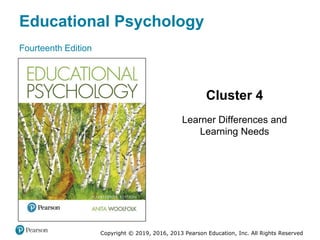This document outlines learning objectives and content for a chapter on learner differences and learning needs. It discusses theories of intelligence, including labeling students and measuring intelligence. It also covers creativity, learning styles, legal protections for students with disabilities or gifts, and addressing the needs of students with learning challenges or who are gifted. The content explores concepts like multiple intelligences, stereotypes around labeling, assessing creativity, and encouraging creativity in the classroom.









































